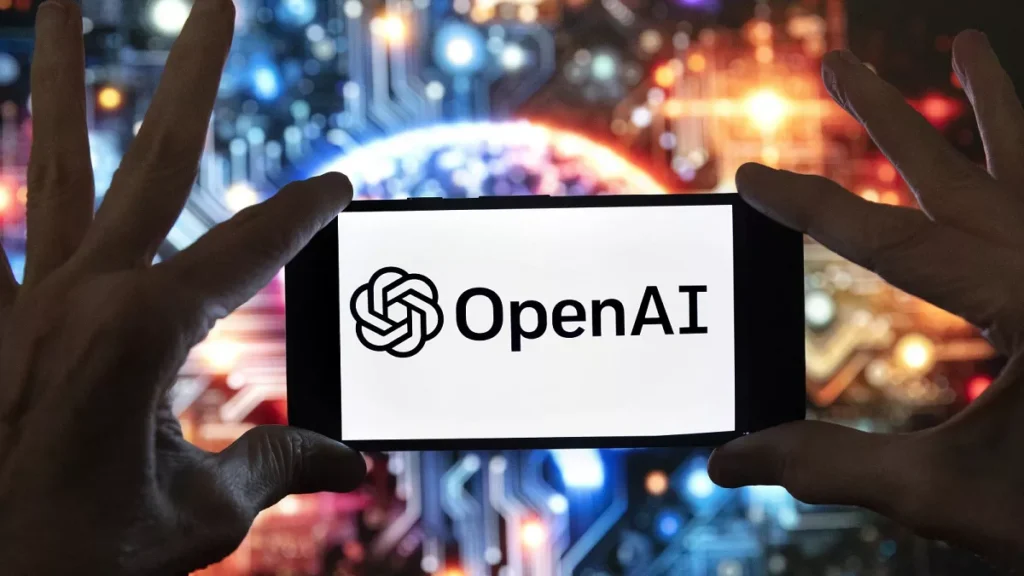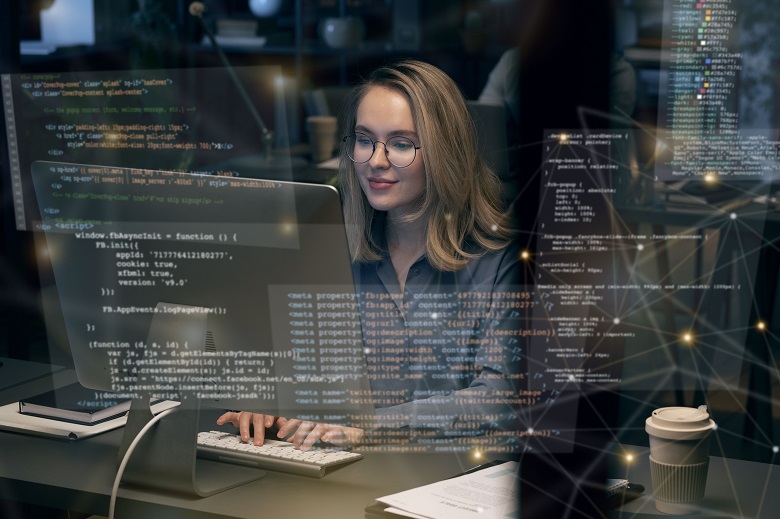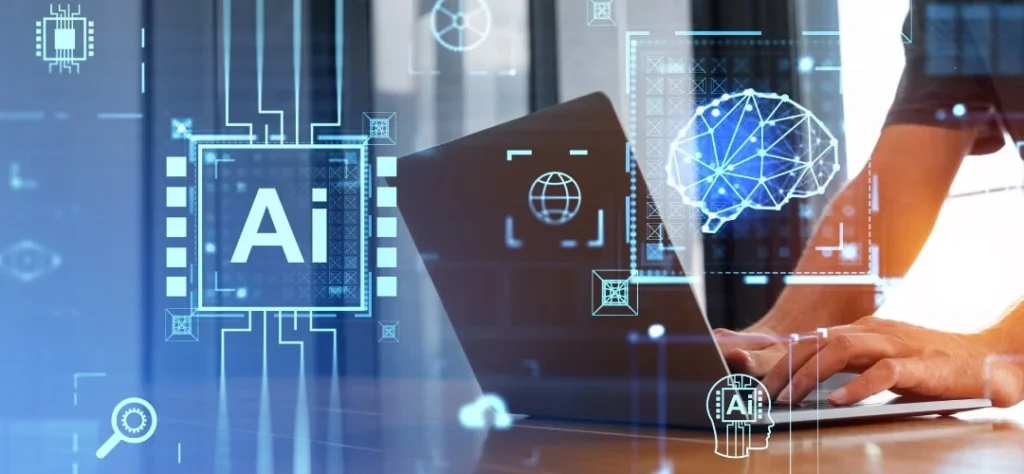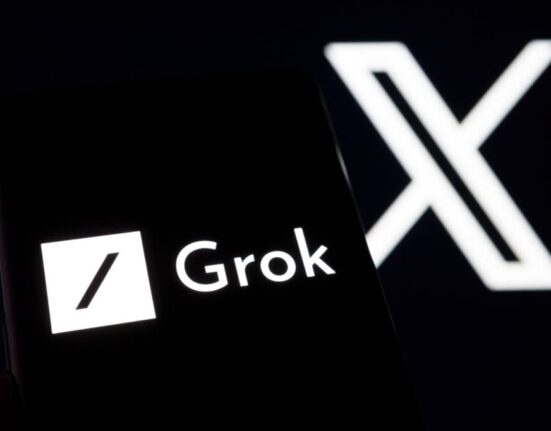A new tool for OpenAI’s artificial intelligence (AI) chatbot ChatGPT called “Screenshot to code” is generating interest in the world of web design. This add-on, found within ChatGPT’s app store, lets users turn screenshots into actual computer code, like HTML and CSS.
This new AI technology could make building websites much easier, especially for beginners. However, it’s still unclear how much time this tool will really save developers in the long run, and whether the code it creates is always of the highest quality.
In our recent article, we showed how ChatGPT can make testing trading strategies easier. Now, we’ll walk you through a test posted on X (formerly Twitter) that demonstrates how ChatGPT can write code from a screenshot, step by step.
Table of Contents
What is ChatGPT?
ChatGPT is an artificial intelligence (AI) chatbot that uses natural language processing to create humanlike conversational dialogue. The language model can respond to questions and compose various written content, including articles, social media posts, essays, code and emails.
ChatGPT is a form of generative AI — a tool that lets users enter prompts to receive humanlike images, text or videos that are created by AI.
ChatGPT is similar to the automated chat services found on customer service websites, as people can ask it questions or request clarification to ChatGPT’s replies. The GPT stands for “Generative Pre-trained Transformer,” which refers to how ChatGPT processes requests and formulates responses. ChatGPT is trained with reinforcement learning through human feedback and reward models that rank the best responses. This feedback helps augment ChatGPT with machine learning to improve future responses.
Who created ChatGPT?
OpenAI — an artificial intelligence research company — created ChatGPT and launched the tool in November 2022. It was founded by a group of entrepreneurs and researchers including Elon Musk and Sam Altman in 2015. OpenAI is backed by several investors, with Microsoft being the most notable. OpenAI also created Dall-E, an AI text-to-art generator.
How does ChatGPT work?
ChatGPT works through its Generative Pre-trained Transformer, which uses specialized algorithms to find patterns within data sequences. ChatGPT originally used the GPT-3 large language model, a neural network machine learning model and the third generation of Generative Pre-trained Transformer. The transformer pulls from a significant amount of data to formulate a response.
Getting started with OpenAI’s new tool
Firstly, users can begin by navigating to the GPT store within ChatGPT. Once there, they can search for “Screenshot to code” and select “Start chat.”
This initial step sets the stage for the AI-powered code generation process.
As of today, July 11, 2024, OpenAI hasn’t announced a brand new tool. However, they did recently update their flagship AI model, GPT-4, to GPT-4o. This update focuses on providing increased intelligence and advanced tools to users, especially free users.

Here’s how you can get started with GPT-4o, keeping in mind it might have limitations for free users:
- Head to OpenAI’s Website: Visit OpenAI and explore their offerings.
- Create an Account (if you don’t have one): Sign up for a free OpenAI account. This will grant you access to the playground, where you can experiment with GPT-4o.
- Explore the Playground: The playground is a user interface where you can interact with GPT-4o. You can provide text prompts and instructions, and GPT-4o will generate text, translate languages, write different kinds of creative content, and answer your questions in an informative way.
- Review Usage Limits: Free users will have limitations on how much you can use GPT-4o. These limitations might involve the number of characters you can input per request or the total number of requests you can make per day. You can find details on the pricing page or within the playground interface.
- Start Experimenting: Provide clear and concise prompts to GPT-4o and see what it generates. Be sure to explore the different functionalities offered, like translation, code generation, and creative text formats.
Here are some additional resources that might be helpful:
- OpenAI API: OpenAI API (This is for advanced users who want to integrate GPT-4o into their applications)
- Tutorials: While there might not be tutorials specifically for GPT-4o yet, you can find tutorials for the GPT-3 playground which will provide a general understanding of how to interact with the tool.
AI code generation from screenshots
In the next step, users simply need to upload a screenshot of their desired web page layout directly within ChatGPT.
After uploading the image, the system takes over.
Pressing “Enter” triggers the built-in AI to analyze the visual data and automatically generate the corresponding HTML and CSS code.
This user-friendly approach eliminates the need for manual code writing and optimizes the development workflow, resulting in improved efficiency and fewer errors.

AI code generation from screenshots is a developing field with exciting possibilities for web development. Here’s a breakdown of what it is and its current state:
Concept:
Imagine taking a screenshot of a website and feeding it into an AI tool. The AI would then analyze the layout, elements, and styling, and attempt to generate the corresponding HTML and CSS code that would recreate the website.
Benefits:
- Rapid Prototyping: For designers and developers, AI code generation could significantly speed up the process of turning design mockups into functional webpages.
- Learning Tool: For beginners, seeing the code generated from a visual example can be a valuable learning aid to understand how HTML and CSS work together.
- Accessibility: It could potentially democratize web development by making it easier for people with less coding experience to create simple websites.
Current State:
While AI code generation from screenshots is a promising field, it’s still under development and has limitations:
- Accuracy: The generated code might not be perfect or fully optimized. Manual editing and refinement are often necessary.
- Complexity: AI tools might struggle with complex website layouts, interactions, or responsive design.
- Limited Functionality: The generated code might be basic and lack features like dynamic content or custom functionalities.
Existing Tools:
There are a few early-stage tools available that utilize AI for code generation from screenshots. Here are some examples (avoiding mentioning specific URLs):
- Screenshot to code converters: These tools allow users to upload a screenshot and get basic HTML and CSS code in return.
- Design-to-code platforms: Some design platforms integrate AI features that can partially translate design mockups into functional code.
Future Potential:
As AI technology advances, code generation from screenshots is expected to become more accurate, versatile, and handle greater complexity. We might see features like:
- Improved code quality: The generated code could be more optimized, cleaner, and require less manual intervention.
- Understanding of design principles: The AI could recognize design patterns and translate them into efficient code structures.
- Generating dynamic code: The ability to create code for interactive elements and data-driven functionalities could emerge.
Overall, AI code generation from screenshots holds promise for streamlining web development workflows and potentially lowering the barrier to entry for beginners. However, it’s important to manage expectations and acknowledge the limitations of current technology.
ChatGPT is simplifying HTML & CSS for everyone
The generated HTML and CSS code is designed for integration with popular website builder platforms like WordPress.
Users no longer need to focus on the complexities of coding languages to create or modify their websites.
Instead, they can focus on the creative aspects of web design, safe in the knowledge that ChatGPT handles the technical side.

With the code generated, users can easily put it into their preferred website builder and make their design ideas real.
Here’s how it could work:
Simplifying Code:
- Code Generation: ChatGPT could generate basic HTML and CSS code based on user prompts. For example, a user could describe the desired layout of a webpage (header, navigation, content area, etc.), and ChatGPT could generate the corresponding HTML structure.
- Code Explanation: It could explain complex code snippets in simpler terms, making it easier for beginners to understand the underlying logic.
- Code Optimization: ChatGPT might suggest ways to streamline existing code, removing unnecessary elements or optimizing for better performance.
Making Learning Interactive:
- Interactive Tutorials: ChatGPT could guide users through building simple webpages with step-by-step prompts and explanations. This interactive learning approach can be more engaging than traditional tutorials.
- Personalized Learning: It could adapt its explanations and suggestions based on the user’s level of understanding. This personalized approach caters to different learning styles and paces.
Limitations to Consider:
- Understanding User Intent: Accurately capturing the user’s desired website layout or functionality can be challenging. Misinterpretations could lead to incorrect code generation.
- Advanced Features: Complex functionalities or advanced CSS techniques might be beyond ChatGPT’s capabilities at this stage.
- Creativity and Design: While ChatGPT can generate basic structures, it might struggle with aspects like creative design choices or implementing a unique visual style.
Democratizing web development
ChatGPT’s “Screenshot to code” feature demonstrates the ongoing evolution of AI tools in making tech more user-friendly and accessible.
This innovation unlocks new possibilities for creative expression and web innovation by simplifying the web development process.
However, we have yet to fully understand the long-term effects on web development practices.
Only time will reveal if this is a turning point in accessible web development or a shortcut that creates hidden complexities down the road.
1. No-code/Low-code Platforms with AI Assist:
- These platforms are at the forefront of democratization. They use drag-and-drop interfaces and pre-built components, but with AI enhancements:
- Smart suggestions: AI can recommend layouts, components, and design elements based on your goals and user needs.
- Automated code generation: AI can translate your visual design choices into basic HTML and CSS code, reducing the need for manual coding.
2. AI-powered Design to Code Tools:
- Take a screenshot of a website design or upload a mockup, and some AI tools can analyze it and:
- Generate code: Provide basic HTML and CSS code that replicates the layout and styling of the design.
- Identify functionalities: The AI might attempt to recognize interactive elements or functionalities and suggest how to implement them in code.
3. Intelligent Code Completion and Error Correction:
- For those who do code, AI can be a helpful companion:
- Autocompletion: AI can suggest relevant code snippets and function calls as you type, speeding up development.
- Error detection and fixing: AI can identify potential errors or inefficiencies in your code and recommend fixes.
Overall Benefits:
- Faster development: AI tools can automate repetitive tasks and generate code, saving developers time.
- Lower barrier to entry: No-code platforms and AI design-to-code tools make web development more accessible for beginners.
- Improved code quality: AI suggestions can help maintain clean and efficient code.
Important Considerations:
- Limitations: AI-generated code might not be perfect and may require manual adjustments or additional coding for complex functionalities.
- Learning curve: Even with AI assistance, understanding core web development concepts is still beneficial.
- Design skills: A strong visual design sense and knowledge of user experience (UX) principles are crucial for creating effective websites.
The Future of AI and Web Development:
We can expect AI to become even more integrated into web development tools, offering:
- More sophisticated code generation: AI might create not just basic layouts but also functional code with dynamic elements.
- Personalized development environments: AI could tailor the development experience to your skill level and project needs.
- Focus on creativity and strategy: With AI handling technical aspects, developers can focus on creative design and strategic web implementation.
Overall, AI is a powerful tool that is democratizing web development. While it won’t eliminate the need for human expertise, it’s making web creation more accessible and efficient for everyone.
Disclaimer ||
The Information provided on this website article does not constitute investment advice ,financial advice,trading advice,or any other sort of advice and you should not treat any of the website’s content as such.
Always do your own research! DYOR NFA
Coin Data Cap does not recommend that any cryptocurrency should be bought, sold or held by you, Do Conduct your own due diligence and consult your financial adviser before making any investment decisions!



